What’s new in TV marketing?
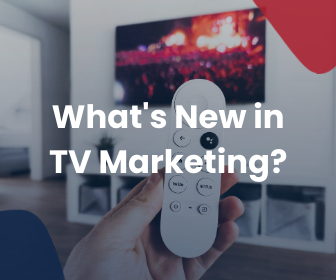
One thing that stays constant, even in the midst of challenging circumstances such as a pandemic, is that people consume media. We always seek out entertainment and information. Content consumption is at an all-time high and therefore, competition for viewer’s attention is as well. However, 84% of marketers say that it is getting harder to grab a consumer’s attention with television advertising alone. Most advertisers surveyed say that TV ads isn’t the first thing that they plan anymore, instead starting with digital and then working in TV. How can CTV and OTT change that?
CTV and OTT
Many marketers are using CTV (connected TV) or OTT (over-the-top) channels to target consumers using streaming services and connected TV devices such as Hulu and Roku. Advertises are embracing these platforms as more and more ad space becomes available. Spending for CTV advertising grew from $6.94 billion in 2019 to $8.88 billion in 2020, a 28% increase.
Advertiser spent an estimated $8.88 billion on CTV in 2020
What’s the difference between CTV and OTT? Connected TV are things like Apple TV and Amazon Firestick. It is marketing based on the devices used to connect users to TV without cable. Over the Top is advertising space found on streaming services, like hulu and Peacock. (Personally, it helps me to think of them like CTV is hardware and OTT is software.) Right now in the United States more people are reachable through CTV and OTT than with cable. Hulu alone made $3 billion in ad revenue last year!
Disadvantages?
What are some disadvantages? There is one main thing. CTV and OTT have lower engagement rates than people who come from digital advertising expect. Why? Well, theres no way to click or show engagement through your TV. For the consumer to follow through a call-to-action, they probably are going to use a different device. Cross device traffic is harder to push and harder to track.
With old school TV advertising, an ad’s effectiveness was tracked by seeing if sales went up in the area the ad played. Thats just not enough data now, especially if CTV/OTT is just a piece of a multichannel campaign. It’s important to be able to track every part of a campaign.
Tracking Options
Option 1: Use IPs. Most people make big purchases on their home wifi. Using retargeting and IP based cookies, it’s pretty simple to serve ads across devices.
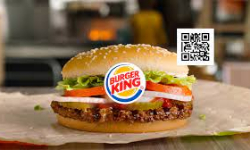
Option 2: Use, specific trackable call-to-actions. Building in gamification to CTV/OTT ads allows consumers to use their phones to follow the call-to-action. The QR-code Burger King ad is a fantastic example of this. In a CTV ad, Burger King challenged consumers to “catch” a moving QR code. If you caught the QR code, it took you to download their app and with the app download, they gave you a free Whopper. It was fun and engaging AND trackable.
Into the Future
Since CTV/OTT is a relatively new ad format, theres a lot new and exciting ways it can be used in the future!
- New ad formats.
We will probably see more direct response ads like the Burger King one. As well as things like pause ads. Ads the are promoted when a users pauses the program. A great way some companies are starting to use this is thinking about why someone would need to pause the show. Are they hungry? How about an Uber Eats ads? Or do they need a bathroom break? Maybe a toilet paper ad?
Another new ad format is contextual-in-show advertising. A billboard in the background of a show can be sold as ad space. It can be changed based on who is watching the show. - Programmatic Linear TV is also starting to become more of an option. Although quite new, it’s becoming more possible to use Nielsen-based user-level data (age, demographic, income) or media-level targeting (show, part of day, network) to inform programmatic style ad spend for traditional linear TV. 20% of advertisers surveyed said that they planned to incorporate programmatic linear into their marketing plans this year, and another 20% said that while they aren’t incorporating it this year, they plan to in the near future.

How will TV advertising change in the future? It’s possible that as CTV and OTT take over the traditional TV space household level targeting such as IP address and Neilson style demographics will become the identification of choice for marketers looking to incorporate TV into their omnichannel campaigns.
Using new tools and integrating in traditional ones, marketers will be able to effectively use TV in their campaigns on into the future!
How do these marketing channels stack up?
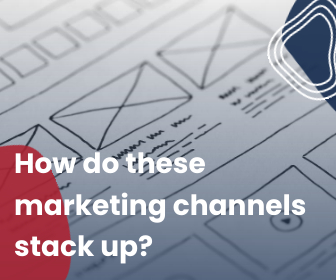
There are A LOT of different marketing channels out there. What are the pros and cons of some of the common ones?
Social Media
Pro
There are over 3.8 billion people on social media around the world. Social media is a fantastic way to connect with customers, build brand loyalty, and generate sales.
People don’t just want to buy from companies because they have good products and services. They want to know what your brand stands for in addition to what it sells. Social media can help potential customers get to you. Social media feel like a 1-on-1 conversation between the brand and consumer, which helps build loyalty.
Con
A lot of the value from social doesn’t show up immediately. It’s rarely simple to track social media’s ROI. Often the goal of social media is not just to generate sales but instead to build connections. Without measurable results, using social media can be discouraging.

Pro
Often it a brand’s only way to communicate with customers and can feel very one on one. A lot of millennial and gen z’ers expect to communicate with brands through email. Also, pretty much everyone has email so you know you will be able to communicate with people through email.
Con
We all get so. many. emails. Most office workers receive 127 every day. It can be hard to stand out from the crowd. People don’t have time to read emails that don’t actually provide them value.
Email marketing also has a lot of laws and rules connected to it that can hurt you if your aren’t careful!
Content/SEO

Pro
Customers often rely on a business’s website for information. Especially for local businesses, it can be the only way to know a shop hours or address. Putting the information on a website instead of a social media or directly in a browser legitimizes the information.
Good SEO gives your website credibility. It makes it easier for people to find your website when they search for it. And it helps create a smoother user experience.
Con
Bad SEO can hurt you. Most searchers never go past the first or second page of Google, though, which is why those top spots in the search results are so coveted. Having the proper SEO can prevent your website form getting organic traffic.
53% of all trackable website traffic comes from organic search. SEO is the main thing influencing how easy it is to find you online organically. Which is probably why it’s estimated that agencies and brands spent over $79.27 Billion on SEO services last year.
Google Ads

Pro
Where are people? On their phones. So, google ads is an extremely effective way to find people where they are. Google ads is great for brand awarness as well as retargeting. It is great if you want measurable results and analytics.
Con
Billboards, signs, posters, newspapers, and magazines all exist with in different physical spaces. With digital advertising however, we are all competing for the same ad space. That ad space is worth more now has less guarantees attached to it.
Trying to figure Google ads can feel like rocket science. There’s a large learning curve and it can a while to feel confident in the set up.
Print and Mail

Pro
Direct mail average open rate is somewhere between 68 and 90%, which is double, triple, or quadruple the average open rates of other marketing channels. Do people who open direct mail actually purchase? Yes! On average people who receive direct mail purchase 28% more items and spend 28% more money!
Why is direct mail so effective? It comes down to fact that we (humans) like getting mail. 41% of Americans of all ages look forward to getting their mail every day. We still want very real things in our hands, which is something totally lost in email inboxes or on social media. That tactile connection translates into 💰.
Con
Since Direct mail requires use of the postal system it has fixed costs. The graphic design of the mail piece may also have an additional cost. Using direct always requires a bit of math and if done wrong can hurt your ROI.
It’s not always posable to see direct, measurable results, from Direct mail campaigns. And if you can measure results, it may take a while to get the full picture.
Another thing that can be a disadvantage to direct mail is that you need a really good foundation of address data. The problem us that a lot of data providers don’t make sure that their data is accurate and that hurts the effectiveness of your campaign.
Connected TV

Pro
TV is a time-tested advertising channel. Although it’s a lot less common than it used to be, it can still be very effective. Many marketers are using CTV (connected TV) or OTT (over-the-top) channels to target consumers using streaming services and connected TV devices such as Hulu and Roku. Advertises are embracing these platforms as more and more ad space becomes available. Spending for CTV advertising is expected to grow from $6.94 billion in 2019 to $8.88 billion in 2020, a 28% increase.
Con
With customer attention spread so thin and cable tv subscriptions consistently falling, (over 16 million in the last five years) there’s a lot less advertising space available. Content consumption is at an all-time high and therefore, competition for viewer’s attention is as well. 84% of marketers say that it is getting harder to grab a consumer’s attention with television advertising alone.
Audiences today expect personalized and relevant targeted ads. Linear TV (cable and network television) often fall far behind in targeting capabilities. Therefore, it can be a challenge for advertisers to figure out how to integrate linear TV into their campaigns.
Let’s Talk: Digital Display
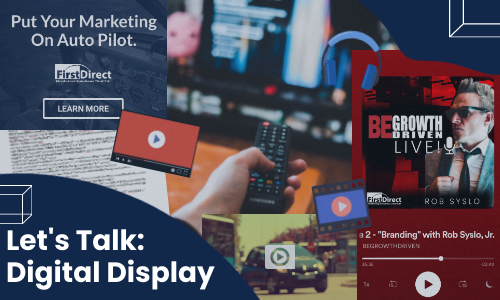
We’ve talked a lot about specific types of Digital Display Ads but what are the differences them? And how do you what type of Digital Display (Or online ad) is the best fit for your business?
What is Digital Display?
Digital Display Ads can be split into 5 main categories:
- Digital Audio Ads
- CTV (Connected TV)
- Video Ads
- Static Ads
- HTML5 Ads
What do Digital Display Ads do?
Digital Display Ads encompasses just about every type of online ad. Each type of Digital Display Ad has its own strengths and weakness. Effective campaigns are often the ones that know how to best utilize each type of ad.
Digital Audio Ads
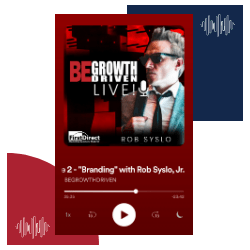
What is Digital Audio Advertising? It’s all the ads you get that are just sound. For example, any podcast, Spotify or Pandora ad is Digital Audio. It’s expected that Digital Audio Ads from just podcasts will surpass a BILLION dollars in 2021 and that the average American will spend nearly 90 minutes a day listening to streamed music or podcasts by 2022.
Digital audio ads are a great way to connect with consumers through a channel that they enjoy. And it is very cost effective, because the ad only plays if they are listening to music or a podcast.
CTV (Connected TV)

Connected TV advertising refers to ads that are delivered to internet-connected TVs – for instance, via Hulu or Roku. CTV is increasing in popularity for marketers! Consumers are embracing these platforms so more and more ad inventory is becoming available. In fact, CTV advertising spend is expected to grow from $6.94 billion in 2019 to $8.88 billion this year, a 28% increase.
The specifies depend on what you need your funnel to accomplish. Some of the processes used are A/B testing, improving user on-page experiences, usability tests, and optimizing existing content.
Video Ads
Video Advertising fits into 2 categories: The ads that play connected to streamed content, such as Youtube ads, and display ads with video content. Those are the ads that start playing a video when your cursor scrolls over it and native video ads.
Video ads are extremely effective. Video content is more eye catching and engaging than static images or text and they are easier to remember. They are great at story telling and promoting brand messaging. Studies show that almost 75% of consumers prefer Video Ads over Text Ads.
Many Video Ads on social media platforms are re-sharable like native content, which makes it easier for consumers to promote your content for you.
Static Ads
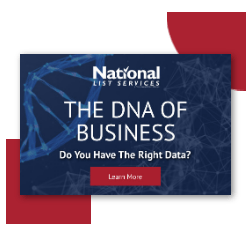
Static Display Ads are probably what you think when you think of online ads. Static Display Ads (or Banners) are the ads that are a solid image of various sizes in designated areas of a webpage or app.
Static Ads are very effective for generating general brand awareness, retargeting, drawing attention to a specific sale, targeting location based traffic, and much more!
HTML5 Ads
HTML5 Ads are attention-grabbing, interactive (or responsive) ads optimized for Google.

HTML5 allows a lot of flexibility and creativity with ads content and formatting. Video, text, imagery, and audio files can all be used. More imaginative ads create more engagement. HTML5 ads tend to have much hight click-through rates than static ads!
HTML5 ads are rendered in code. You are sent to code itself as well as the MP4 video.
What’s the best fit for you?
Every business and situation is different! No one type of ad is best for each business but usually a combination of the 5. Online advertising can be touchy so it’s important to have a strategy.
What’s your favorite type of Digital Display Ads to use for your business?
